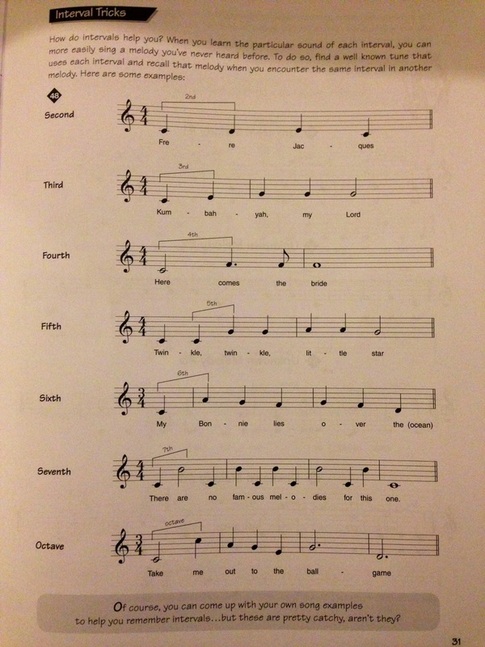 Knowing how to read and play music is certainly is an awesome skills to have, but what about 'hearing' music? Developing your ear to hear what is happening in the music is the icing on the cake. Here are some great tips on hearing intervals and being able to name them as soon as you hear them. Firstly, let me quickly explain what an interval is. An interval is simply the distance between two notes. The musical alphabet is A, B, C, D, E, F, G. If note C is the root note and the consecutive note played is a G it would be a Perfect 5th, if the consecutive note was E it would be a major 3rd. Intervals will differ from minor and major scales. Let's just focus on the major scale to start with. Start by playing a snippet of the song that you will recognise when it starts to be played, as shown below (from the book Fast Track Lead Singer 1 by Blake Neely). Practice this three times and then play the root note and the interval... See if you can start to hear the song automatically as soon as you hear the first 2 notes played... Once you can, you will find it so easy to recognise. Other songs that are great for these intervals are: M2 - Rudolf the Red Nose Reindeer (G, A, G, E, C5, A, G) or transposed to (C4, D, C4, A, F, D, C) M3 - When the Saints Go Marching In (C, E, F, G, C, E, F, G) P4 - We Wish You a Merry Christmas (D, G, G, A, G, F) P5 - Star Wars (C, G, F, E, D, C) M6 - Dashing through the Snow (D, B, A, G, D) M7 - The Major 7th always sounds dissonant and out of place... Have you got any song suggestions?? Check these out....
0 Comments
|

 RSS Feed
RSS Feed

